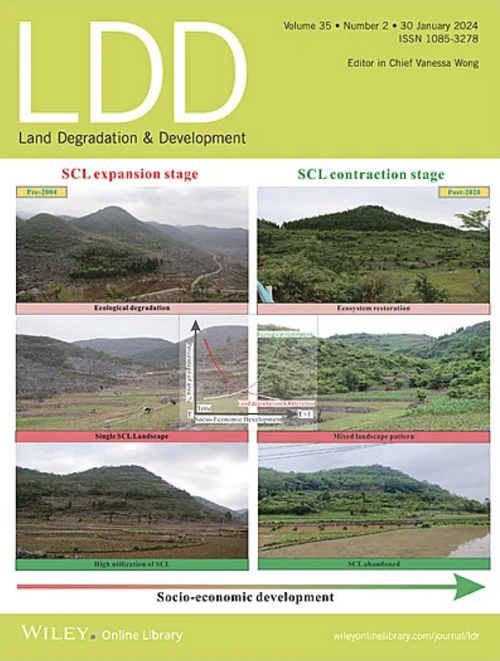Reassessing Soil Wind Erosion in Arid Regions of Central Asia: Fully Considering the Contribution of Non-Photosynthetic Vegetation (NPV)
IF 3.6
2区 农林科学
Q2 ENVIRONMENTAL SCIENCES
引用次数: 0
Abstract
Wind erosion refers to wind transport of fine particulate matter and nutrient-rich materials. This form of erosion can have a considerable impact on the ecological environment and human health. Regional wind protection and sand fixation are considered to be major ecosystem services in arid zones. Previous applications of wind erosion assessment models in arid zones applied green vegetation as the main model parameter. However, there has been little consideration of the role of Non-Photosynthetic Vegetation (NPV) on wind erosion, which is widely distributed in arid zones. Therefore, this study reconstructed a soil wind erosion model (WEM) applicable to the arid zone of Central Asia by quantitatively assessing regional NPV and coupling NPV with the Revised Wind Erosion Equation (RWEQ) model based on the cusp mutation model. The results showed that NPV significantly reduced wind erosion in northern and central Kazakhstan from 2001 to 2020. The adequate consideration of NPV resulted in a reduction in simulated wind erosion in Central Asia by 400 t km−2 per year. NPV had the greatest effect on wind erosion in spring and autumn, whereas it had least effect in winter, mainly due to the coverage of NPV and the seasonality of wind erosion. Regions showing a positive correlation between temperature and wind erosion were mainly located in northern Kazakhstan with a high coverage of NPV. Precipitation showed a negative correlation with wind erosion. Incorporation of NPV into the RWEQ model improved the accuracy of simulated wind erosion in Central Asia by 8.2%. The proposed method can support mitigation of wind erosion hazards and the improvement of the ecological environment in arid regions of Central Asia. This study can also act as a reference for improving the accuracy of large-scale simulation of wind erosion.求助全文
约1分钟内获得全文
求助全文
来源期刊

Land Degradation & Development
农林科学-环境科学
CiteScore
7.70
自引率
8.50%
发文量
379
审稿时长
5.5 months
期刊介绍:
Land Degradation & Development is an international journal which seeks to promote rational study of the recognition, monitoring, control and rehabilitation of degradation in terrestrial environments. The journal focuses on:
- what land degradation is;
- what causes land degradation;
- the impacts of land degradation
- the scale of land degradation;
- the history, current status or future trends of land degradation;
- avoidance, mitigation and control of land degradation;
- remedial actions to rehabilitate or restore degraded land;
- sustainable land management.
 求助内容:
求助内容: 应助结果提醒方式:
应助结果提醒方式:


